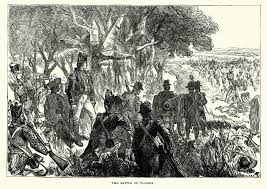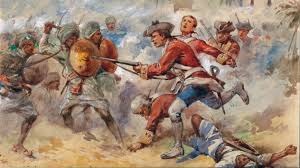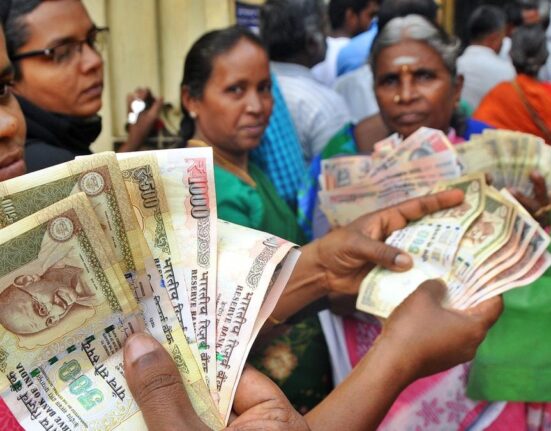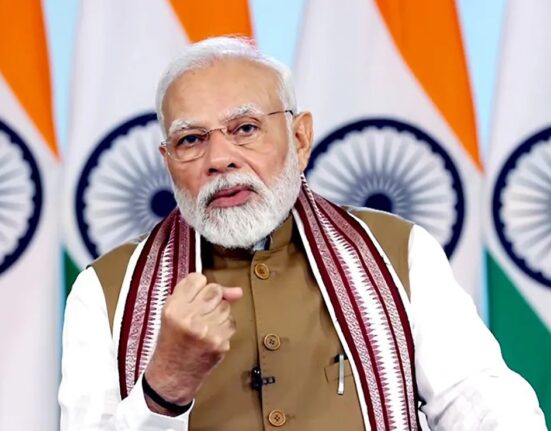परिचय
The Battle of Plassey, fought on 23 June 1757 near Palashi (Plassey) on the Bhagirathi River in Bengal, was a decisive confrontation between the forces of the British East India Company led by Robert Clive and the army of the Bengal Nawab, Siraj-ud-Daulah, that transformed the Company from a trading corporation into a territorial power in India. The outcome hinged less on battlefield prowess than on political intrigue and treachery within the Nawab’s camp, especially the defection of his commander-in-chief, Mir Jafar, whose secret pact with the Company predetermined the result. Plassey opened the floodgates to British dominance in Bengal and, ultimately, across the subcontinent, altering South Asia’s political economy for two centuries.

Background: From Calcutta to Plassey
- Causes of confrontation included the Company’s abuse of trade privileges (dastaks), unapproved fortifications at Calcutta, and its harboring of political fugitives—actions that angered the new Nawab, Siraj-ud-Daulah.
- In 1756, Siraj-ud-Daulah seized Calcutta; the episode popularly remembered as the “Black Hole of Calcutta” inflamed British opinion and led to a counter-expedition from Madras under Robert Clive, who retook Calcutta in early 1757.
- Clive then negotiated the Treaty of Alinagar (February 1757), restoring Company privileges, even as he cultivated a secret coalition against Siraj-ud-Daulah involving Mir Jafar, banker Jagat Seth, Rai Durlabh, and the broker Omichand, promising to make Mir Jafar Nawab in exchange for support and payments.
Opposing Forces and Field
- The Nawab’s host at Plassey numbered roughly 50,000 with artillery and war elephants, bolstered by some French gunners; Clive’s force comprised about 3,000 (including European infantry and sepoys) with a small but well-handled artillery train.
- The battle site lay amid mango groves near the river, with early monsoon rains turning ground soggy—an important factor in the handling of gunpowder and artillery on both sides.
The Battle: 23 June 1757
- Fighting began in the morning and was marked by artillery duels; a heavy downpour soaked the Nawab’s powder and ordnance, while the Company’s guns were reportedly better protected, giving Clive a tactical edge as the day wore on.
- Crucially, key Nawab lieutenants—Mir Jafar and Rai Durlabh—held back their contingents, having already conspired with Clive, which left Siraj-ud-Daulah’s engaged units isolated and sapped morale.
- After about a day’s action that often resembled skirmishing more than full-scale battle, the Nawab’s position collapsed; his commander Mir Madan fell, panic spread, and Siraj-ud-Daulah fled the field toward Murshidabad.
- British casualties were minimal (contemporary accounts speak of a few dozen), whereas the Nawab’s side lost several hundred with key officers killed or captured, reflecting the one-sided political reality behind the fighting.
Outcome and Immediate Aftermath
- Siraj-ud-Daulah was captured while fleeing and soon murdered on the orders of Miran, son of Mir Jafar, who was installed as Nawab under Company influence.
- The Company secured free trade rights (duty-free privileges) in Bengal, Bihar, and Orissa; French settlements in Bengal were surrendered; and vast cash payments, presents, and territorial grants—including the zamindari of the 24-Parganas—enriched Company coffers and officers like Clive personally.
- Plassey destroyed the independence of the Bengal nawabship in practice: the Nawab became a dependent ally, while the Company gained decisive leverage over Bengal’s administration and commerce.
Why Plassey Mattered
- Strategic turning point: Plassey marked the first major territorial-political victory of the East India Company in India and decisively shifted the balance in the Anglo-French rivalry, weakening French prospects in Bengal as the Seven Years’ War raged globally.
- Financial windfall: Immediate plunder, indemnities, and trade monopolies put “vast resources at the disposal of the British,” enabling the Company to build a larger army and finance further conquests across India.
- Path to Diwani (1765): The political leverage accrued after Plassey culminated in the Treaty of Allahabad (1765), by which Mughal emperor Shah Alam II granted the Company the Diwani—the right to collect land revenues in Bengal, Bihar, and Orissa—formalizing Company fiscal control over the richest province in India.
- Systemic transformation: Control of Bengal’s revenues allowed the Company to underwrite expansion, restructure military power with sepoy forces, and entrench a new political economy in which commercial and sovereign power fused within a corporate state.
Key Figures
- Siraj-ud-Daulah (Nawab of Bengal): Young successor to Alivardi Khan; his assertive stance against unauthorized Company fortifications and privilege abuse brought matters to war; defeated at Plassey and killed shortly after.
- Robert Clive: Architect of the conspiracy and commander at Plassey; his victory established his reputation and secured unprecedented political and financial gains for the Company in Bengal.
- Mir Jafar: The Nawab’s commander-in-chief who colluded with the Company; installed as Nawab after the battle, he granted extensive privileges, payments, and territorial rights to his British patrons.
- Jagat Seth and associates: Influential banking house whose financial clout and alignment with the British coalition made the political pivot possible.
Military and Tactical Notes
- Weather and logistics: Monsoon downpours degraded the Nawab’s gunpowder and artillery effectiveness, while the Company’s guns remained serviceable under cover, amplifying Clive’s limited numerical strength.
- Treachery over tactics: The non-participation or deliberate inaction of major Nawabi divisions under Mir Jafar and Rai Durlabh turned a potentially large-scale engagement into a controlled collapse, highlighting political subversion as the main determinant.
- French role: A small French contingent served the Nawab’s guns but could not alter the outcome against coordinated British fire and internal betrayal.
Consequences for Bengal and Beyond
- Economic capture and deterioration: The Company’s monopolization of trade and extraction of wealth following Plassey fed British expansion and, over time, contributed to distress in Bengal through corruption, private trade abuses, and revenue pressures under puppet nawabs.
- Institutional consolidation: Post-Plassey ascendancy laid the groundwork for the “dual government” (diarchy) and, after Buxar (1764) and Allahabad (1765), direct revenue collection through the Diwani, transforming the Company into Bengal’s fiscal sovereign.
- Imperial trajectory: The Bengal base financed campaigns that subdued rivals across India; in British military memory, Plassey is recalled as the battle that “led to the British becoming the greatest economic and military power in India”.
Timeline
- 1756: Siraj-ud-Daulah seizes Calcutta; “Black Hole” episode enters British polemics.
- Early 1757: Clive retakes Calcutta; Treaty of Alinagar restores Company privileges.
- 23 June 1757: Battle of Plassey; Siraj-ud-Daulah defeated; Mir Jafar raised as Nawab.
- 1757–1765: Company secures free trade, indemnities, territories; French influence in Bengal eclipsed.
- 1764–1765: Buxar victory and Treaty of Allahabad grant the Company Diwani of Bengal, Bihar, Orissa.
ऐतिहासिक महत्व
Plassey’s true significance lies in inaugurating Company rule: a commercial corporation leveraged intrigue and a small force to capture the fiscal heart of the subcontinent, funding a standing army and empire-building project that would culminate in the British Raj. The battle’s brevity and low British casualties underscore that Plassey was decided in the countinghouse and council chamber as much as on the field, with conspiracies and credit underwriting cannon and courage.

Interesting Facts
- The “battle” lasted only hours, with British casualties recorded in the dozens, highlighting the primacy of prearranged defections.
- Immediate gifts and grants after Mir Jafar’s installation included the zamindari of the 24-Parganas and enormous cash to Clive and Company officers, symbolizing the fusion of private profit and public power.
- National Army Museum and British memory frame Plassey as the stepping-stone to economic-military supremacy in India; Indian analyses stress the plunder-financed expansion and its social costs in Bengal.
निष्कर्ष
The Battle of Plassey was less a conventional military triumph than a masterclass in imperial statecraft by commerce: clandestine alliances, financial leverage, and a judicious use of force toppled Bengal’s sovereignty and empowered the East India Company to convert revenue into rule. In its wake came duty-free monopolies, puppet nawabs, and, within eight years, the Diwani—anchoring Company dominion over India’s richest province and setting the course for British ascendancy across the subcontinent.








इस बारे में प्रतिक्रिया दें